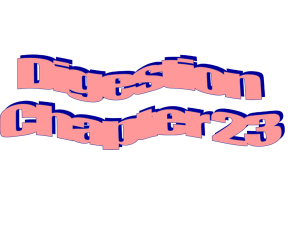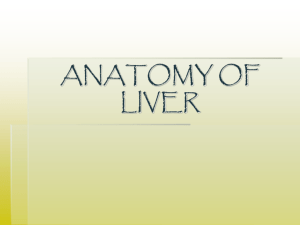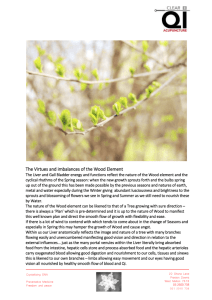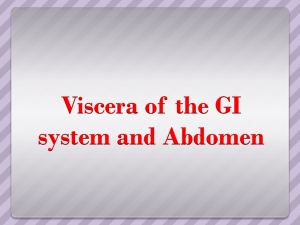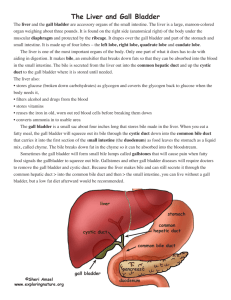Chohep - Alpine Animal Hospital
advertisement
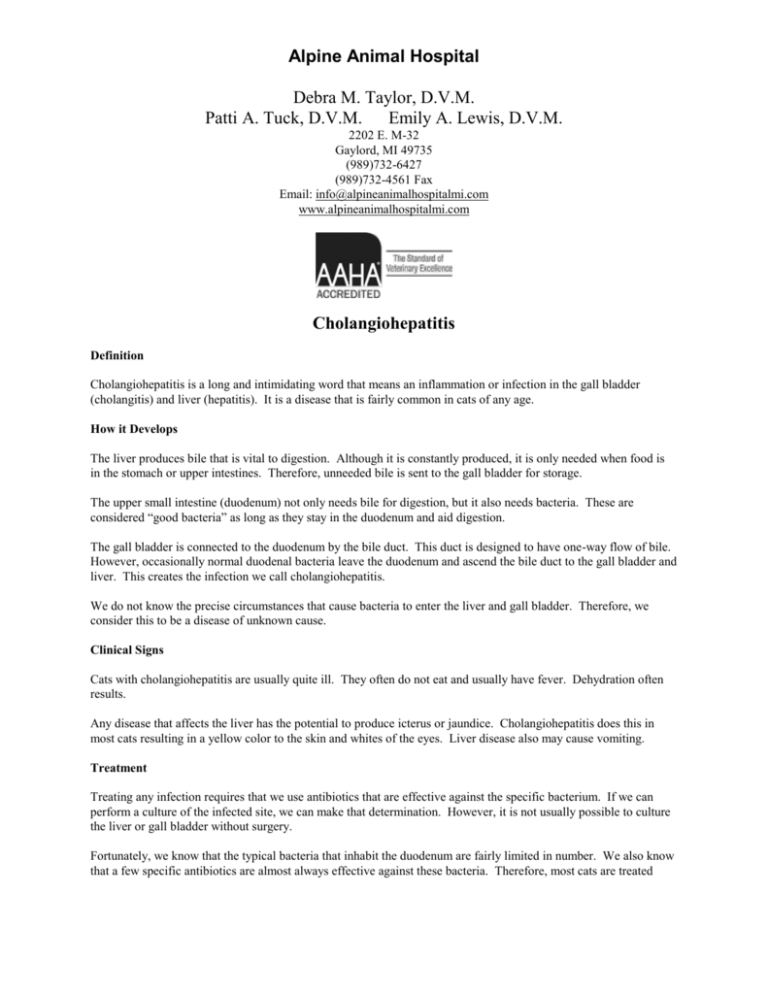
Alpine Animal Hospital Debra M. Taylor, D.V.M. Patti A. Tuck, D.V.M. Emily A. Lewis, D.V.M. 2202 E. M-32 Gaylord, MI 49735 (989)732-6427 (989)732-4561 Fax Email: info@alpineanimalhospitalmi.com www.alpineanimalhospitalmi.com Cholangiohepatitis Definition Cholangiohepatitis is a long and intimidating word that means an inflammation or infection in the gall bladder (cholangitis) and liver (hepatitis). It is a disease that is fairly common in cats of any age. How it Develops The liver produces bile that is vital to digestion. Although it is constantly produced, it is only needed when food is in the stomach or upper intestines. Therefore, unneeded bile is sent to the gall bladder for storage. The upper small intestine (duodenum) not only needs bile for digestion, but it also needs bacteria. These are considered “good bacteria” as long as they stay in the duodenum and aid digestion. The gall bladder is connected to the duodenum by the bile duct. This duct is designed to have one-way flow of bile. However, occasionally normal duodenal bacteria leave the duodenum and ascend the bile duct to the gall bladder and liver. This creates the infection we call cholangiohepatitis. We do not know the precise circumstances that cause bacteria to enter the liver and gall bladder. Therefore, we consider this to be a disease of unknown cause. Clinical Signs Cats with cholangiohepatitis are usually quite ill. They often do not eat and usually have fever. Dehydration often results. Any disease that affects the liver has the potential to produce icterus or jaundice. Cholangiohepatitis does this in most cats resulting in a yellow color to the skin and whites of the eyes. Liver disease also may cause vomiting. Treatment Treating any infection requires that we use antibiotics that are effective against the specific bacterium. If we can perform a culture of the infected site, we can make that determination. However, it is not usually possible to culture the liver or gall bladder without surgery. Fortunately, we know that the typical bacteria that inhabit the duodenum are fairly limited in number. We also know that a few specific antibiotics are almost always effective against these bacteria. Therefore, most cats are treated very successfully with antibiotic therapy. It usually takes 1-2 weeks to clear this infection. Do not discontinue antibiotics before the prescription is completed, no matter how well your cat appears to be doing. Some cats are very ill and require hospitalization so fluid therapy and nutritional support can be given. The hospital stay usually lasts 3-7 days. When your cat is discharged, antibiotics are usually dispensed to be continued at home. Prognosis A very large majority of cats with cholangiohepatitis recover completely without any long-term effects. Therefore, we definitely encourage treatment. Recurrence Because cholangiohepatitis is caused by the cat’s normal intestinal bacteria, the disease can occur again. However, in reality, very few cats have this disease a second time.



